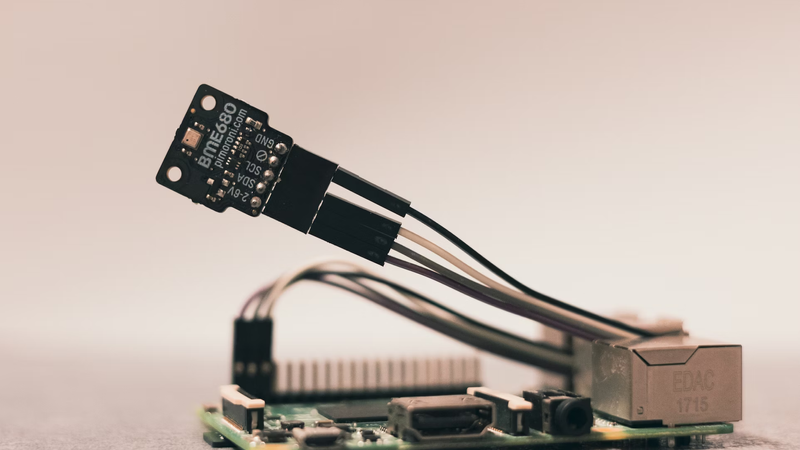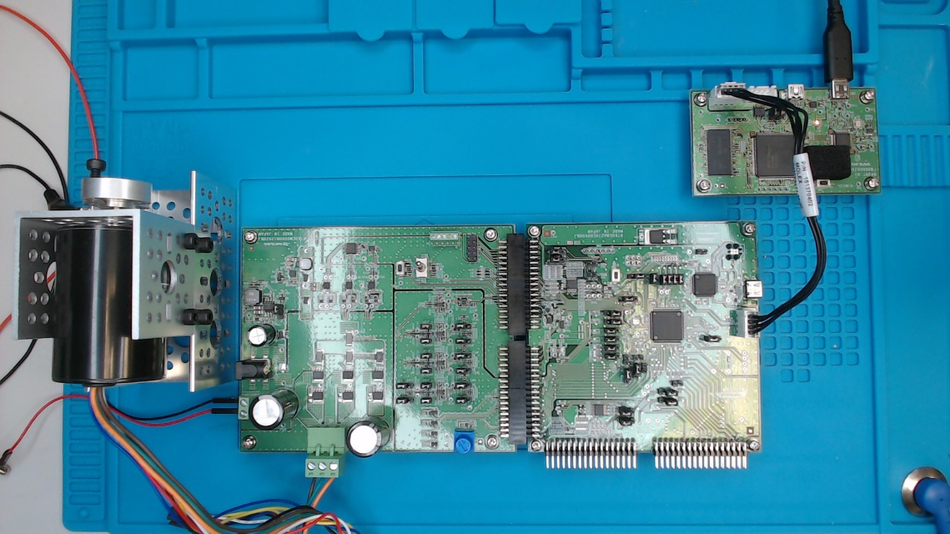Reality AI: A Game Changer in Sensor Data Analysis
Article 6 of Bringing Intelligence to the Edge Series: The utilization of edge AI facilitates advanced system optimization, predictive maintenance, and improved anomaly detection, greatly advancing technological capabilities across varied fields.
This is the sixth and final article in a 6-part series featuring articles on "Bringing Intelligence to the Edge". The series looks at the transformative power of AI in embedded systems, with special emphasis on how advancements in AI, embedded vision, and microcontroller units are shaping the way we interact with technology in a myriad of applications. This series is sponsored by Mouser Electronics. Through their sponsorship, Mouser Electronics shares its passion and support for engineering advancements that enable a smarter, cleaner, safer manufacturing future.
Unscheduled equipment downtime can be costly for companies—both financially and in time spent on repairs. By having systems to monitor and report on potential equipment issues, companies can catch potential issues before they become major problems. This helps them take corrective action quickly and avoid losing resources due to unscheduled or extended equipment downtime. It also helps them identify issues that can be quickly and easily fixed, saving time and money in the long run.
To mitigate downtime, predictive maintenance using machine learning (ML) algorithms can be trained and deployed based on data gathered from sensor information, providing early detection in critical systems. Renesas Reality AI has revolutionized the way businesses analyze sensor data. The platform uses ML algorithms and advanced analytics to extract meaningful insights from data streams generated by equipment sensors. With its powerful tools, Reality AI has become a game changer in the field of sensor data analysis
What Is Reality AI?
Renesas Reality AI is a software tool that allows developers to develop intelligent, embedded artificial intelligence (AI) applications quickly and easily for edge devices. The suite of tools includes an intuitive drag-and-drop interface for data upload, pre-trained ML models, and automatic code generation for Renesas’s e² studio integrated development environment (IDE), allowing developers to build and deploy applications faster and with less effort.
Renesas Reality AI supports a wide range of use cases, including predictive maintenance, anomaly detection, and voice. Using its robust ML capabilities, developers can easily train and optimize models using their own data and quickly deploy those models to their target devices. The tool also includes comprehensive support for a wide range of Renesas hardware platforms and microcontrollers (MCUs), making it easy to integrate with existing hardware and software systems. Renesas Reality AI supplies a powerful and efficient solution for developers looking to build intelligent, embedded AI applications for edge devices.
Features of Reality AI
The Reality AI platform offers several key features that make it a valuable resource for businesses looking to analyze sensor data:
Anomaly detection: By identifying anomalies in the data, the platform can automatically generate ML models, explanatory visualizations, and hardware design analytics. This can be especially useful for predictive maintenance applications, where identifying issues early can prevent costly downtime and repairs.
Advanced signal processing: Reality AI automatically searches a wide range of signal-processing transforms to create a custom, optimized feature transform.
MCU/MPU edge nodes: Reality AI runs on almost every MCU and microprocessor (MPU) core available from Renesas, with new ones added constantly. Reality AI also supports Renesas Motor Control boards.
Data visualization: The platform offers a user-friendly interface that allows businesses to visualize their data in real time. This can be useful for monitoring operations and identifying trends or issues as they occur.
Applications of Reality AI
The Reality AI platform has a wide range of applications in numerous industries, including industrial automation; heating, ventilation, and air conditioning (HVAC); and automotive. The following are just a few examples of how the platform could be used:
Industrial anomaly detection: Through a hardware and software solution for equipment monitoring and end-of-line testing for quality control, users can deploy an edge node with one or more included sensors and begin monitoring production equipment for unusual or anomalous functions.
HVAC and refrigeration systems: By combining ML and edge processing and using data such as vibration and electrical signals, this application can potentially predict a wide array of anomalies, faults, and operating conditions.
Automotive sound recognition: By analyzing audio data, the solution can detect and localize potential hazards (e.g., emergency vehicles, motorcycles) that may be hidden from view from line-of-sight sensors.
Predictive maintenance: By analyzing sensor data from industrial machines, the platform can identify potential issues before they occur. This can prevent costly downtime and repairs and increase the lifespan of the Machines.
Sensorless Motor Demo
With support provided for the Renesas Motor Control Kits, one way to evaluate the features available through Reality AI Tools is by using an existing demo, such as the Reality AI demo on mouser.com. The demo incorporates the Renesas RA6T2 Motor Control Kit and provides insight and instructions for creating a predictive sensorless ML model that detects unbalanced motor loads using current, voltage, and speed.
The RA6T2 Motor Control Kit features an enhanced central processing unit (CPU) and hardware accelerator for home appliance and industrial automation application deployments. The kit comes complete with all the basics, including a CPU board, inverter board, communication board, and brushless DC motor.
The project article outlines the necessary resources and required hardware, with applicable links as well as steps to train and deploy your ML model. If you are looking to jump right in with Reality AI without the hardware, prebuilt data files are also available to help you get started. The steps in the demo take you through everything from uploading and curating your data to training and deployment. Of course, this only scratches the surface of the entire suite of available features, such as using new data to further test and optimize as well as ways to potentially decrease the complexity of the model without sacrificing accuracy.
An example of a simple application for this type of demo is detecting issues with load balance in a washing machine during a spin cycle and notifying the end user.
How to use Reality AI?
To efficiently use Reality AI in your projects, follow this 7-step process:
Gather Data: Begin by sourcing data relevant to your use case. This data can be collected from various sources depending on your project requirements. Once collected, upload the data directly or link the source files to Reality AI.
Organize Data: Next, assign labels to your data for training purposes. It's also important to segment your files into consistent sample sizes suitable for AI exploration, model training, or testing.
Explore: Using the gathered and organized data, start to create potential feature sets and machine learning models for classification. Select the most suitable model based on factors such as accuracy and computational complexity.
Train: Once you've chosen the best-fit model, train it using a subset of your data. Be mindful of balancing the data used in training to prevent model overfitting or underfitting.
Test: After training, test the model against a different data subset. This step is crucial to validate the model's performance and accuracy. Techniques like k-fold validation can be useful here.
Optimize: In this step, fine-tune the model by optimizing for sensitivity and tolerances. If the model's performance isn't satisfactory, retrain it as needed.
Deploy: With Reality AI's integration with the Renesas e2 studio, you can easily compile your models for a wide range of Renesas processors, ready for deployment.
Conclusion
Renesas Reality AI is a powerful software toolset that can revolutionize the way businesses analyze sensor data. Through automated analysis and selection of the most relevant sensor data for the specific prediction model Learn More RA6M4 Evaluation Kit of interest, the Reality AI toolset extracts meaningful insights and offers potential BOM optimization. These capabilities can also be incorporated via firmware updates into existing systems without additional BOM costs.
The models generated are extremely resource efficient, consuming insignificant CPU load so the MCU is practically free to perform all the usual tasks while incorporating these features. With its complete integration into the Renesas toolchain and full support for the MCU portfolio and development boards, the Reality AI toolset provides the speed and accuracy required to deliver the precision businesses expect to make sense of vast amounts of data, helping to minimize costly equipment downtime.
This article is based on an e-magazine: Bringing Intelligence to the Edge by Mouser Electronics and Renesas Electronics Corporation. It has been substantially edited by the Wevolver team and Electrical Engineer Ravi Y Rao. It's the sixth and final article from Bringing Intelligence to the Edge Series. Future articles will introduce readers to some more trends and technologies shaping the future of Edge AI.
This introductory article unveils the "Bringing Intelligence to the Edge" series, exploring the transformative potential of AI at the Edge
The first article examines the challenges and trade-offs of integrating AI into IoT devices, emphasizing the importance of balancing performance, ROI, feasibility, and data considerations for successful implementation.
This second article delves into the transformative role of Endpoint AI and embedded vision in tech applications, discussing its potential, challenges, and the advancements in processing data at the source.
The third article delves into the intricacies of TinyML, emphasizing its potential in edge computing and highlighting the four crucial metrics - accuracy, power consumption, latency, and memory requirements - that influence its development and optimization.
The fourth article delves into the realm of data science and AI-driven real-time analytics, showcasing how AI's precision and efficiency in processing big data in real-time are transforming industries by recognizing patterns and inconsistencies.
The fifth article delves into the integration of voice user interface technology into microcontroller units, emphasizing its transformative potential.
The sixth article delves into the profound impact of edge AI on system optimization, maintenance, and anomaly detection across diverse industries.
About the sponsor: Mouser Electronics
Mouser Electronics is a worldwide leading authorized distributor of semiconductors and electronic components for over 1,200 manufacturer brands. They specialize in the rapid introduction of new products and technologies for design engineers and buyers. Their extensive product offering includes semiconductors, interconnects, passives, and electromechanical components.



